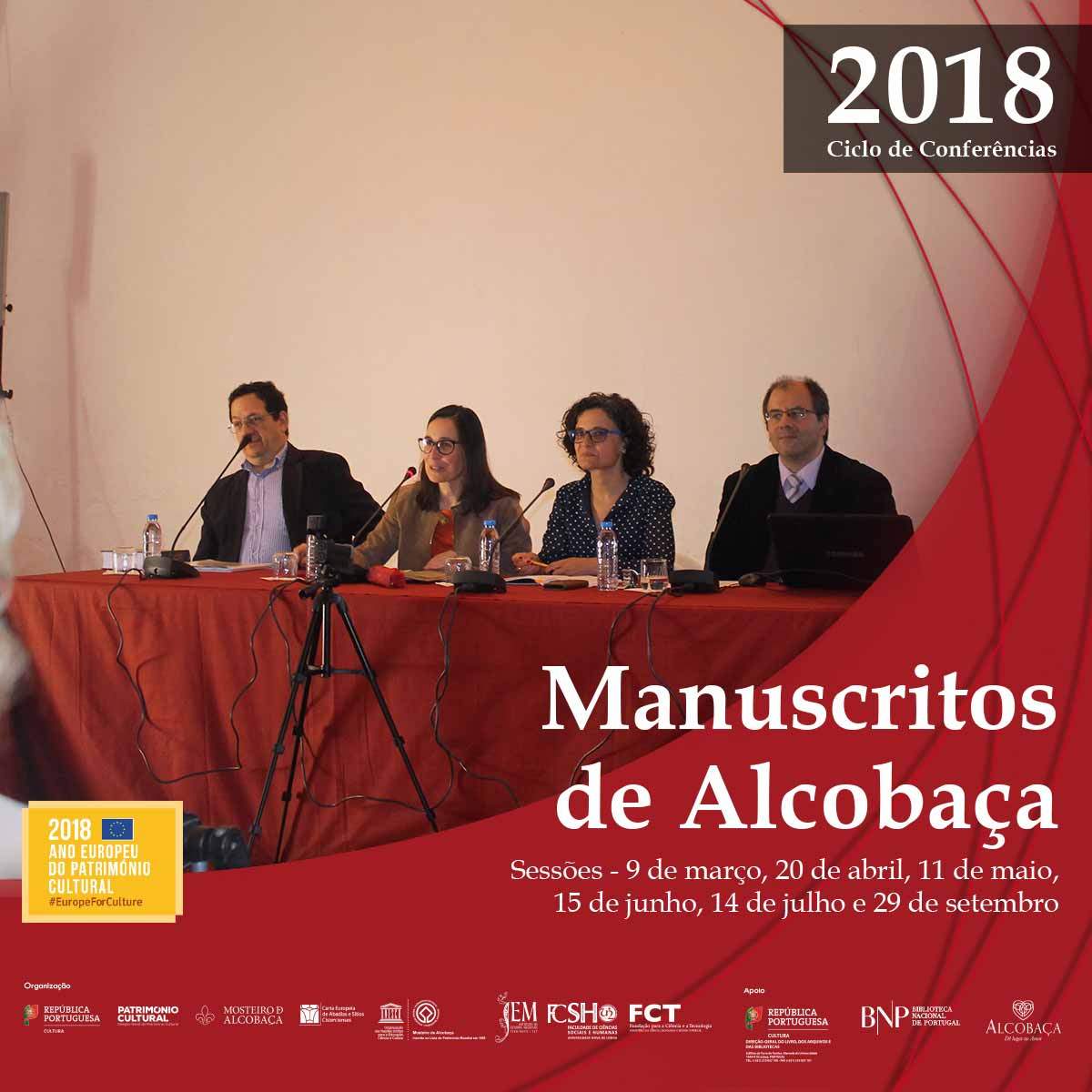Conference Cycle Manuscritos de Alcobaça II – materialidades, temas e problemas | 4th session
15.06.2018 | 15:00
Sala das Conclusões, Mosteiro de Alcobaça

The fourth session of the cycle “Manuscritos de Alcobaça II” will take place on June 15, and will feature lectures by Saul António Gomes from the Center for History of Society and Culture of the University of Coimbra (CHSC-UC) and Mário Farelo from the Institute of Medieval Studies of the School of Social Sciences and Humanities of the NOVA University (IEM-NOVA FCSH).
1st Conference:
“A reforma da Leitura Nova e o seu impacto no Mosteiro de Alcobaça”, by Saul António Gomes (CHSC-UC)
The reforms promoted by King Manuel I crossed the most diverse historical domains. In the cultural field, in addition to the royal patronage in the Arts, Literature, Law, Science, and maritime Discoveries, the reform was carried out in the chancellery, in the royal library, and, above all, in the archives of the Torre do Tombo and in the registries of major ecclesiastical institutions with royal patronages, such as the Monasteries of Santa Cruz de Coimbra, Alcobaça and Tomar, among other institutions, stands out. The reform of the royal archives at the Torre do Tombo, which resulted in a new and wide-ranging (re)ordering of documents in the custody of this great place of national memory, resulted in the development of new graphic models, which could be translated into a new Manueline or Portuguese Gothic script, and in the production of some seven dozen registration tomes and documentary cartulary of great graphic apparatus, the richness of materials used and decorative splendor in the service of the glorification of the monarch and his Kingdom. The process of “reforming the deeds” of the royal archive went beyond the reign of King Manuel I, extending throughout the rest of the 15th century. In Santa Cruz de Coimbra, King Manuel I ordered a similar reform, which resulted in the series of cartulary called Authentic Books, as well as, in Alcobaça, an identical series was produced, in size and codicological value, whose tomes are called “Livros Dourados”. The author intends to describe and elucidate in greater detail the historical process of this Manueline reform, dictated by the canons of the “Leitura Nova”, which involved the renovation of the Alcobaça notary’s office in the first third of the 16th century.
2nd Conference:
“O Mosteiro de Alcobaça e o papado medieval: uma história (também) de manuscritos”, by Mário Farelo (IEM-NOVA FCSH)
Increasingly studied and recognized by the international scientific community, the medieval library of the monastery of Alcobaça constitutes an important part of its scriptural memory. However, this is not the only one. Hundreds of documents on parchment and paper, preserved today at the Torre do Tombo, reveal another memory of the institution, built upon a documentary selection that is both the result of practical considerations and the fruit of social representations propounded by those who guarded its collection (Joseph Morsel). The present intervention intends to study this writing memory of the Alcobaça people through the specific case of one of the most important institutions of the medieval world – the Papacy. From the analysis of the chronology and the theme of the pontifical documentation known and related to the Alcobaça monastery, we will try to assess the existence of a certain profile in the clerical relationship between both institutions and, thus, contribute to a better knowledge of the medieval past of Alcobaça.
